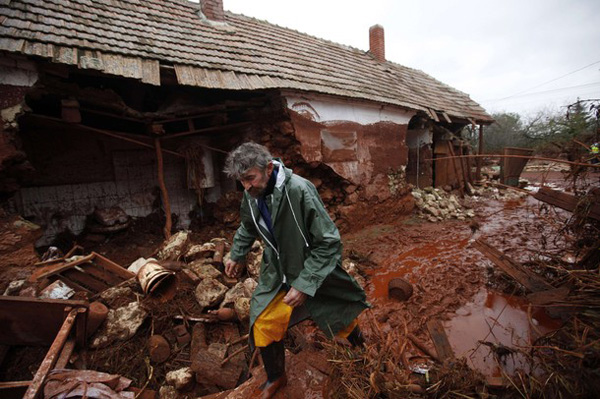Hungary toxic mud likely to leave long lasting effect
 |
|
A man walks next to his destroyed house in the flooded village of Kolontar, 150 km (93 miles) west of Budapest October 6, 2010. [Xinhua/Reuters Photo] |
The toxic mud that swept several villages in Hungary might leave long-lasting effect on the soils, groundwater, plants and animals, the Geneva based World Wide Fund for Nature(WWF) said on Wednesday.
Gbor Figeczky, Acting CEO of WWF-Hungary said that the damage to the wild life is so grave that it "can not even be appraised."
The water polluted by the toxic mud will inevitably flow into the Danube river and endanger parts of Europe's Natura 2000 protected areas. "This puts the conservation related damages very substantial -- even at international scale," said Figeczky.
Figeczky expected further damages to fauna and flora, as the chemicals used to neutralize alkaline in rescue operations are toxic as well.
"Some animals and plants die instantly, some will face the consequences of serious poisoning in the longer term as the heavy metals of the red mud accumulate in their bodies," he added.
Millions of gallons of red mud, a bauxite residue, from an alumina facility broke through a container barrier on Monday in western Hungary, dousing on the tiny hamlet of Kolontar and the neighboring village Devecser with millions of gallons of caustic liquid, killing at least four.
The red mud contains heavy metals that are highly toxic. Hundreds of tons of plaster are being used to bind the toxic mud, and military helicopters have been pouring neutralizing materials into the waterway from the air.
 0
0 







Go to Forum >>0 Comments